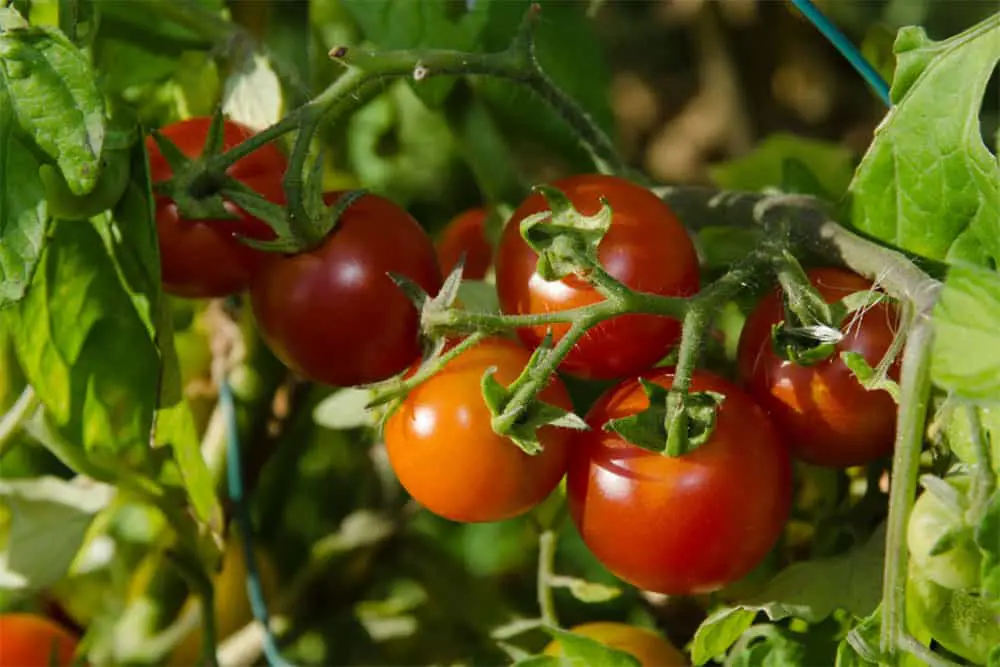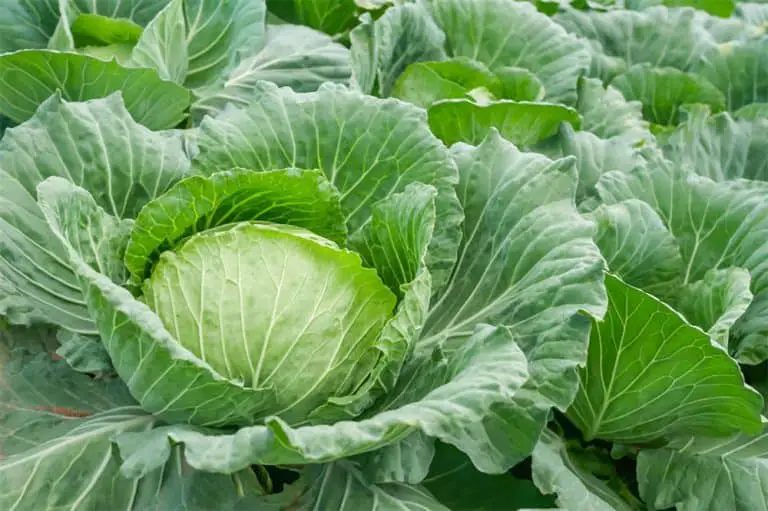What Is Eating My Tomatoes? [And How To Fix It!]
Are you asking ‘What Is Eating My Tomatoes?’ Here are all the reasons why and what you can do to protect your precious tomatoes!
Tomatoes are a popular thing to be grown all over the world. You can grow a vast variety of tomatoes. Tomatoes are normally grown in a greenhouse but can be grown outside. You can enjoy freshly grown tomatoes from June until October.
However, tomatoes can attract a wide range of pests and diseases that could affect your tomatoes. This article will go into further detail on who and what could be eating your tomatoes, and ways that you can prevent this from happening.
Consider using organic, Non-GMO, Open-pollinated seeds for healthy vegetables from seed to harvest!

Related Articles:
- How Cold Can Tomatoes Tolerate?[+Tips To Keep Them Juicy]
- How Many Tomatoes Per Plant? (And How To Grow More!)
- What Size Grow Bag For Tomatoes Is Best?
DISCLAIMER
Some of the links on here are affiliate links and I may earn if you click on them, AT NO EXTRA cost to you. Hope you find the information here useful! Thanks.
What Is Eating My Tomatoes In The Garden?
Animals
If you grow your tomatoes outside or leave the door to your greenhouse open, then you may find that some animals are eating your tomatoes. Animals such as deers, squirrels and birds are known for eating tomatoes.
However you will know if animals are eating your tomatoes, because you will see bite marks and they will leave footprints in the soil. Animals won’t eat the entire tomato normally, they will just take bites out of each tomato. Also it is common for animals to sometimes steal unripe tomatoes, if you notice that any are missing.
Birds can do damage too if your plants are outside. However instead of bite marks you will notice holes. These are caused from pecking damage. This can especially be seen on tomatoes on high vines.
Insects
Insects such as hornworms, squash bugs and fruitworms, all like to eat your tomatoes. If you notice small holes in your tomatoes, then the likely culprit will be the fruitworm.
Fruitworms are a type of caterpillar that eats the leaves and fruits off a tomato plant. They create holes in your tomatoes and then your tomato starts to rot. The fruitworm will leave a hollow space inside the tomato as it has eaten the insides. As a result, you have to throw tomatoes that have been by fruitworms away, as they are now inedible.
Other insects don’t do as much damage, you may notice small holes or the leaves looking eaten. However this damage is only to the surface and they may still be able to be eaten.
Hornworms are large green or brown caterpillar that is about 2 to 3 inches long, with little horns on their head. You will only see hornworms at night. They come out at night and eat the tomato by tunnelling into the tomato and its stem.
They can be hard to spot as they blend so well into the stems.
What Is Eating My Tomatoes In The Greenhouse?
You may think that your tomatoes are safer in the greenhouse than outside, which is true. Yet some animals and pests still find their way in. If it isn’t caterpillars then slugs and snails are the main culprit.

Slugs will happily eat not just the leaves but they will eat the stalks and the tomato itself. You will notice slugs have been in your greenhouse, by the slime tracks they leave on the floor.
Note– If you want to make your green fingers happier and your life easier, you can use this affordable 83 piece ultimate gardening set to help you repot like a pro!

How Do I Protect My Tomatoes?
Animals
If your tomato plants are outside then we advise you to use bird cages and netting to cover your tomato plants. A combination of cages made from chicken wire and netting over the top works well. This helps to keep animals away and off your tomato plants. The netting will also stop birds landing on your fruit and trying to peck at the tomatoes.
Placing mesh or net covering can be an effective and natural method to repelling unwanted insects and birds from eating you lushes tomatoes!

Planting your tomato plants in a raised bed, might also help keep your plants away from smaller animals. The raised bed will be too high for them to reach the fruit. If you don’t have much space then you can plant your tomatoes in large pots and these will also be too high so that smaller animals can’t reach them.
Insects
The insects mentioned above are normally big enough that if you see them you can physically remove them. You should check under the leaves of your plants and along the stems, especially as some capillers can blend into the stem.
Another way to protect your plants is to use a repellent. You can either make your own or buy one from your local store. A natural bacteria known as Bacillus Thuringiensis, is another way to protect your plants from caterpillars. You just need to dissolve ¼ teaspoon in 1 gallon of water and spray the leaves thoroughly.
Slugs
To protect your tomatoes from slugs and snails, you can put organic slug pellets on the soil near your plants or around your greenhouse. Some gardeners have found that copper rings that surround your tomato plant are an effective slug deterrent. If a slug tries to cross one, it receives a small shock that forces it back.
Slugs find it difficult to travel over sharp or prickly materials. So creating a barrier using bark, sawdust, sand or ash is a great way to protect your plants, but you may have to retop this defense barrier over time.
Applying garlic after rain or in the evenings, is another great way to repel these creatures, as they don’t like the smell.
Alternatively, you try spreading diatomaceous earth around your greenhouse or garden plots to deter slugs from entering the vicinity.

Final Thoughts
Whether your tomato plants are inside or outside, this will decide what is eating your tomatoes. Wildlife is the main culprit for eating your tomatoes. If your tomatoes are outside then you need to protect your plants by using some form of barrier, which could be a fence or netting.
Animals will only take single bites out of your tomatoes, compared to caterpillars who will eat your tomatoes completely. Hornworms and Fruitworms are the main caterpillars to watch out for as they could destroy your crop.
There are ways to protect your tomatoes from being eaten so you can enjoy tomatoes for longer. Where you plant your tomatoes is really important and you need to be aware of what wildlife is nearby.
Support your growing tomatoes by using a piece of string and supporting clips. It’s the quickest and most effective way for you to provide the support your tomato plants need!

It might be worth planting your tomato plants in raised beds or in a greenhouse for better protection than outside. There are repellants if any creatures make their way inside to keep your plants safe.
You need to make sure you are constantly checking your plants to make sure they stay healthy. Barriers in the form of physical fences or repellants around your plants or greenhouse, is the best way to keep pests away from eating your tomato plants.


![How To Grow Moneymaker Tomatoes + Tips To Grow Faster! [2022]](https://aboveandbeyondgardening.com/wp-content/uploads/2022/08/how-to-grow-money-maker-tomatoes-768x512.jpg)
![Using Neem Oil For Tomatoes: The Ultimate Guide [2023]](https://aboveandbeyondgardening.com/wp-content/uploads/2022/10/neem-oil-for-tomatoes-1-768x512.jpg)

![How To Grow Oxheart Tomatoes+ Unique Growing Tips [2022]](https://aboveandbeyondgardening.com/wp-content/uploads/2022/08/how-to-grow-oxheart-tomatoes-1-768x444.jpg)

![How To Harvest Chives Without Killing The Plant [Exact Steps]](https://aboveandbeyondgardening.com/wp-content/uploads/2022/10/how-to-harvest-chives-without-killing-the-plant-4-768x512.jpg)